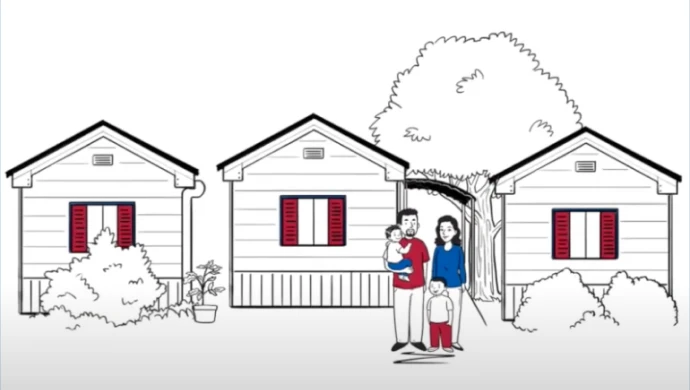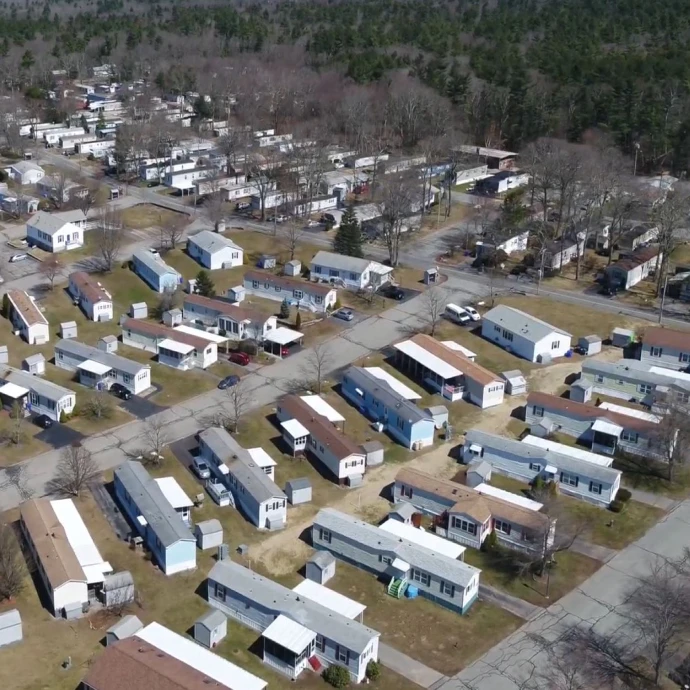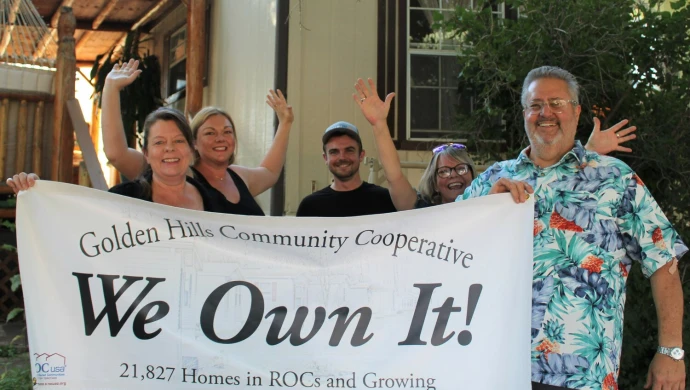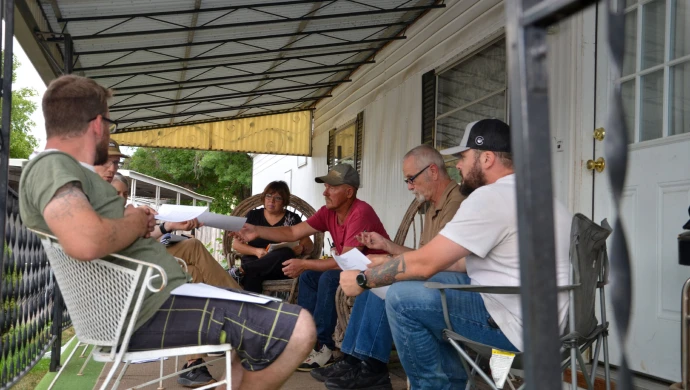Why Resident Ownership?
Control sits with the landowners.
In traditional manufactured home communities (sometimes still outdatedly called “mobile home parks” or “trailer parks”), even though residents own their homes, the community owners control the land, set the site fees and make the park rules. They also control the condition of the community – including roads, water, electric, waste-water systems and landscaping. Each time the community is sold to a new owner, the rent is likely to increase.


Benefits of a ROC?
Security, control and zero profit margin.
Unlike traditional manufactured home communities, ROCs are not subject to market-based rent increases, and there is no profit margin in monthly site fees. This cooperative ownership gives homeowners the ability to control costs, improve facilities and make their own rules while providing the peace of mind of land ownership.
What makes a ROC different?
Control
Members have a say in their ROC, with major decisions made by democratic vote. An elected Board of Directors appoints committees and hires a property manager to manage daily tasks and oversee the community’s needs.
Eviction Security
Members continue to own their own homes individually and own an equal share of the land beneath the entire neighborhood. They sign perpetual leases and enjoy lifetime security against unfair eviction.
Liability Protection
Members are not personally liable for loans made by the cooperative. Their only personal financial investment in the ROC is their Member share, which is typically $250-$500 and paid back when they move out.
Strong Sense of Community
Homeowners in ROCs get to know their neighbors like never before. They help one another, check in on one another, and get together for potlucks, cleanup days or simply to enjoy their secure neighborhood.
Site Fees Compared
Use our Site Fee Predictor to see firsthand the savings homeowners in ROCs experience.
Each year, ROC USA commissions a market rent study to measure how ROCs are doing relative to the market on the important question of affordability. The data is remarkably consistent: ROCs are not just secure, they’re stable, too. And the affordability in ROCs gets better with time. Our longitudinal study by a national appraisal firm shows ROC Members’ site fees are already 11% below market after just five years, and 21% below market after 10 years.
Site Fee Predictor
Resident Owned Communities vs. Commercially Owned Communities
This tool compares site fee increases in two communities, one a ROC where annual increases average 0.9% and the other a commercially owned community, where annual increases average 7.1%.*
- $0
- Future Monthly Rent Resident Owned
- $0
- Future Monthly Rent Commercially Owned
- $0
- Lifetime Savings For ROC Residents
*MHInsider Magazine, May/June 2024
A tale of two communities
The journeys to resident ownership in Longmont and Golden, Colo., involved overcoming challenges related to rent increases and unstable living conditions under private ownership. Both communities benefited from the support of nonprofits like ROC USA and Thistle, as well as local government.
Longmont’s success hinged on a significant loan from the Longmont City Council and robust community collaboration. In Golden, the community’s purchase involved a larger financial transaction and more direct city involvement.
Click below to see what happened in Golden when first a large out-of-state owner took over and then see how things changed when the residents purchased and where they are one-year later.

Residents in Golden deal with the aftermath of a private company buying their mobile home park

How life — and rent — improved when residents took ownership of a Longmont mobile home park
How does a ROC impact the homeowners who live there?
Part of the uncertainty of living in an investor-owned manufactured home community is not knowing if, someday, the community will be sold and homeowners will be forced to move their family and their home. Homeowners in ROCs can live there as long as they choose so long as they pay their site fees and follow the community rules, which are voted on by the Membership.
Homes in ROCs are naturally more desirable and sell more quickly than homes in investor-owned communities. Their monthly site fees are lower and, research shows, they have a 12% higher price per square foot when they sell.
With the knowledge that their homes – their largest assets – are secure, homeowners increasingly invest in their homes and yards. Beautification committees enhance neighborhood landscaping, boost curb appeal, and improve signage, fostering a more welcoming community and increasing community pride.
The cooperative structure of a ROC fosters an enhanced feeling of community as neighbors come together to help one another and work for the betterment of the entire ROC. They get to know one another like never before and are able to connect with homeowners in ROCs from coast to coast through the ROC Association and ROCKET, ROC USA’s Online Community for Knowledge, Education and Training.
Your support empowers ROCs and contributes to vital improvement projects.
Together, we can build stronger, more vibrant neighborhoods for all residents. Every contribution makes a difference. Join us in making positive change happen!
